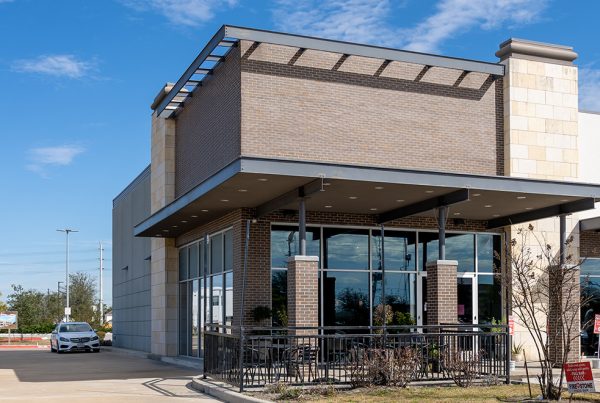Introduction
In the world of real estate, a 1031 exchange offers investors a unique way to defer capital gains taxes and exponentially grow their portfolio. However, in 2024, navigating the landscape of 1031 investments is fraught with challenges. So, what do you do when your golden opportunity falls through? This blog post provides some valuable strategies to help 1031 investors bounce back when the unforeseen happens.
Understanding the Challenges in 1031 Investments
In another article, “Navigating Challenges in 1031 Exchanges” we go into the challenges in more detail. Grasping the essence of the challenges that accompany 1031 investments is a prerequisite for formulating successful strategies. The journey of 1031 exchange is marked by a labyrinth of rules, deadlines, and qualifications, making it quite an intricate process to navigate. The main obstacles standing in the way of 1031 investors in 2024 primarily encompass a shrinking pool of like-kind properties to choose from, intensified competition, and unpredictable market dynamics. These challenges throw a wrench into the gears of investment plans but recognizing them paves the way for smart decision-making and strategic planning. By having a firm grip on the realities of the current investment landscape, you can better equip yourself to face any uncertainties that may arise.

Importance of Timely and Effective Decision Making
In the world of 1031 exchanges, time isn’t just money—it’s potentially thousands, if not millions, of dollars in deferred taxes. The IRS’s tight deadlines necessitate rapid yet judicious action. Just imagine—you have a brief window of 45 days to nominate potential replacement properties and only 180 days in total to close the deal. This reality adds a degree of pressure but also underscores the critical role of timeliness in this process.
Every decision matters in the race against the clock. Comprehensive due diligence must be performed swiftly. An opportunity that appears golden on the surface may harbor hidden flaws beneath. Scrutinizing property details, understanding the neighborhood trends, and assessing potential returns should be done promptly yet meticulously.
While speed is of the essence, so is the quality of your decision-making. It’s not about jumping at the first opportunity but choosing the right one. It’s about balancing urgency with precision and swift action with strategic thinking. Remember, if your first-choice opportunity slips through your fingers, the clock doesn’t stop ticking. Hence, being ready to pivot and swiftly secure another suitable property is imperative.
In this high-stakes investment landscape, the ability to decide effectively and promptly can make the difference between capitalizing on the benefits of a 1031 exchange and missing the boat altogether. The key is to blend speed with sagacity, urgency with understanding, and timeliness with tact. It’s about turning the pressures of time into the pillars of your investment success story.
Taking risks on real estate is what got you here in the first place but missing out on a 1031 exchange because you didn’t have a backup plan shouldn’t be one of those risks. When engaging in a 1031 exchange, consider “over identifying” on the first day—not the last one. Having a solid backup plan allows you to take greater risks on the perfect exchange. Consider alternative investments as a priority, and not as a last-ditch effort to save your exchange. Is a parking option available to provide additional time? What are the costs of successful exchange, versus a failed one.
For a more concrete understanding and information about how 1031Max solves 1031 Exchange problems, read our “Guide to 1031 Tax Deferred Exchanges” article.
Diversifying Your Real Estate Portfolio
Stepping outside your comfort zone and branching out into different real estate avenues can be an effective way to safeguard your investment when unforeseen circumstances arise. The old adage, “Don’t put all your eggs in one basket,” holds true in the world of 1031 investing. Instead of concentrating your resources in a single investment, why not spread them out?
The benefits of a diversified portfolio are two-fold. Firstly, it minimizes risk. If one property encounters turbulence, the others can still perform well, thus reducing the impact of the underperforming investment on your portfolio’s overall performance. Secondly, diversification widens your field of play for 1031 exchanges. By owning various types of real estate—be it residential properties, commercial buildings, or rental units—you’re more likely to have a suitable replacement property on hand if a golden opportunity falls through.
And let’s not forget geographic diversity. Investing in properties scattered across different locations can help you weather localized market downturns and potentially capitalize on the growth in diverse real estate markets.
Keep in mind, diversification doesn’t mean blindly investing in a hodgepodge of properties. It requires thorough research and due diligence. Understanding the unique attributes, risks, and returns of each property type and location is crucial. Make sure the properties align with your investment goals and risk tolerance.
In essence, diversification is all about balancing your investment portfolio to optimize returns and mitigate risks. It’s a strategy that requires both courage and caution but could potentially act as your safety net when your prime 1031 investment falls through. Remember, in the game of 1031 investing, resilience is key, and diversification is one of the paths to achieving it.
Enlisting the Help of Professionals
Embarking on the 1031 exchange journey solo can feel like attempting to navigate an intricate maze without a map. This is where professionals come in, serving as your compass in this labyrinth of rules and regulations. A qualified intermediary (QI), as mandated by the IRS, is your fundamental ally in the 1031 exchange process. They uphold the integrity of the exchange by holding the funds and ensuring all IRS rules are stringently adhered to.
Yet, a QI isn’t the only professional who can add value to your 1031 investment journey. Real estate agents and brokers, seasoned in the realm of 1031 exchanges, can offer insights into market trends, potential investment opportunities, and the valuation of properties. They serve as your eyes and ears in the real estate market, scanning it for golden opportunities that align with your investment goals.
Don’t overlook the importance of having a real estate attorney in your corner, either. They can dissect complex legal jargon and help you understand the legal implications of your investment choices. They ensure that your contractual agreements are solid and that your rights as an investor are protected.
Additionally, consider bringing a 1031-experienced accountant on board. They can optimize your tax position and provide financial advice tailored to your unique situation. Think of them as your financial health consultants, guiding you towards tax efficiency and financial well-being.
Remember, each of these professionals brings their expertise to the table, helping you make the most of your 1031 exchange. However, their advice should serve as a guide, not a substitute for your own research and judgment. After all, you know your financial goals and risk tolerance best. The collaboration of these professionals, coupled with your own informed decision-making, can help create a resilient investment strategy capable of withstanding even when a prime 1031 opportunity slips away.
Constant Market Research and Vigilance
The real estate market is like a living organism, always changing, evolving, and presenting new challenges. As a 1031 investor, you need to be prepared to change with it. Constant market research and vigilance are the keys to stay ahead in this game. It’s about keeping your finger on the pulse of the market, recognizing potential opportunities, and identifying emerging risks. This proactive approach can give you the upper hand in a competitive landscape.
Becoming a diligent follower of real estate news can open doors to invaluable insights. From policy changes to market trends, every bit of information adds a piece to the puzzle. Similarly, joining investor forums can provide a platform to engage in insightful discussions and learn from the experiences of fellow investors.
Making use of advanced real estate data platforms can also be a game-changer. These platforms allow you to dig deeper, offering a wealth of data at your fingertips. Whether it’s demographic shifts, neighborhood statistics, or market projections, these data-driven insights can inform your investment decisions.
This continuous learning process can help you recognize golden opportunities and be aware of potential pitfalls. And when an unforeseen circumstance causes your primary opportunity to fall through, this knowledge can be instrumental in helping you pivot quickly and efficiently. But remember, while staying informed and vigilant is critical, it’s just as important not to let the influx of information cloud your judgment. Use these insights as tools to guide your decision-making process, but always align them with your unique investment goals and risk tolerance.
In essence, constant market research and vigilance are about becoming a knowledgeable and prepared 1031 investor. It’s about evolving with the market, anticipating changes, and making informed decisions. So, stay curious, stay informed, and stay prepared. After all, in the dynamic world of 1031 exchanges, knowledge isn’t just power—it’s your compass guiding you through the intricate labyrinth of investment challenges.
Developing a Backup Plan
In the unpredictable world of 1031 exchanges, the unexpected is to be expected. That’s why savvy investors know the importance of a well-thought-out backup plan. While your initial investment strategies may seem solid, golden opportunities can sometimes slip through your fingers due to reasons beyond your control. This is where your contingency plan comes in, serving as your safety net and paving the way forward when circumstances take a sharp turn.
Imagine your prime replacement property falls through at the last minute. Rather than being caught off guard and scrambling to find a quick replacement, you should have a shortlist of pre-vetted, potential replacement properties at your disposal. This way, you can promptly pivot and still comply with the stringent IRS timelines. Remember, a backup property doesn’t mean settling for less. Each property on your list should align with your investment goals and risk tolerance.
But a backup plan goes beyond having additional properties lined up. It also encompasses alternative investment strategies that you’re ready to employ if the circumstances call for it. For instance, if the local real estate market becomes overly saturated or competitive, consider broadening your horizons and exploring properties in burgeoning markets elsewhere. This not only provides a new pool of potential investments but also contributes to the diversification of your portfolio.
In essence, developing a backup plan is about staying agile and prepared for the unexpected twists and turns that come with 1031 investing. It’s about having an adaptable strategy that allows you to keep moving forward, even when your primary plan doesn’t pan out. So, equip yourself with a robust backup plan and navigate the world of 1031 investing with confidence. After all, as the old saying goes, “hope for the best, prepare for the worst.”






